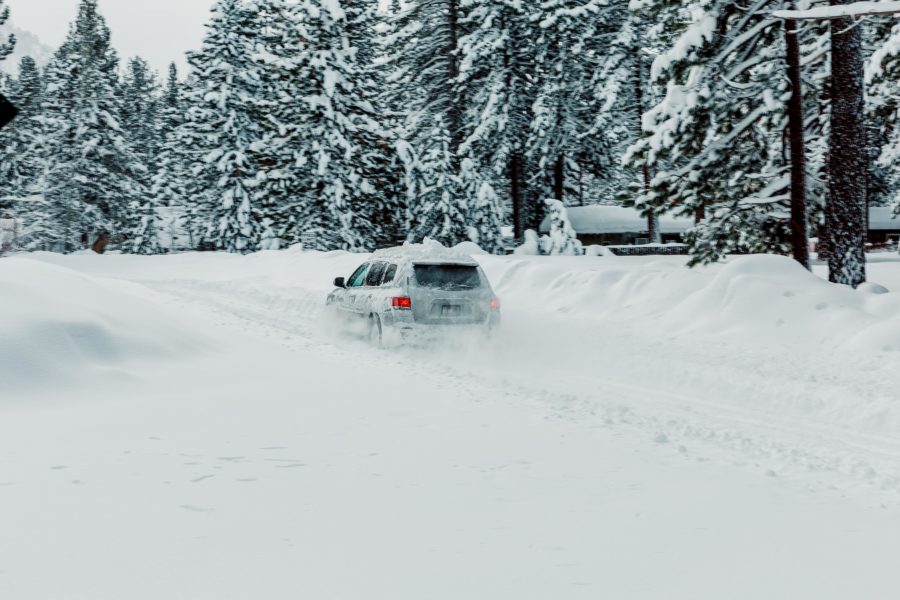Extreme Weather Strikes West Coast
Snow covers roads and trees in Lake Tahoe, California.
Over the past week, the West has experienced very rare weather patterns in the form of multiple winter storms. The whole state of California has received a pounding of rain, hail, and even snow in unlikely areas.
Coastal California experienced up to 6-8 inches of rain in the past week, with central California getting hit the hardest with 8-10 inches throughout Yosemite Valley. Cold temperatures averaging in the low 50s and 40s brought hail and even snow in some parts, with San Diego issuing their first-ever blizzard warning.
Palisade Tahoe Ski Resort in the Sierra Nevadas got a heavy dump of 146 inches of snow, adding to over 12 feet. This has been the snowiest winter ski season (October-February), since 1970. Palisade Tahoe has been temporarily shut down since Tuesday.
Mammoth mountain surpassed 600 inches of snowfall this season with an astonishing 20 inches this past Tuesday in a 24 hour span. Many runs on the mountain remain closed because of the possibility of an Avalanche. At this time, Highway 395 from Bridgeport to Bishop remains completely closed.
In Southern California, Big Bear has had a great share of snow this late season with 57 inches, however, Mount Baldy got hit the hardest, tallying up to 8 feet at high elevations. Baldy typically sees 36’’ of snowfall per year, with these past two weeks smashing that average by 5 feet.
What’s most striking about these storms is that unlikely areas such as Santa Barabara experienced snow dustings. From the beach, the Santa Ynez mountains can be seen off in the distance covered in snow from the most recent storms. Snow was also reported in the Bay Area, East of Berkeley and Oakland. Overall, the snow fell as low as 1500 feet above sea level.
At the latest, Governor Newsom has officially declared a state of emergency Thursday morning in more than 13 counties. Some of these countries include Amazon, Kern, Los Angeles, Madeira, Mariposa, Nevada, San Bernardino, San Luis Obispo, and more. The national guard was also activated in order to be ready to give their support.
With record breaking weather like this, many Californians are left with the question, “Are we still in a drought?” The answer is yes. The majority of California’s water comes from the Colorado River, which was not drastically affected by the storms. So, all of this groundwater statewide helps with the drought, but not in a way that can get us out of it.
At this point, Californians seem to have seen enough rain for the year, but unfortunately, it won’t end at that. Much of California is bracing for more storms throughout March, with the possibility of at least one more atmospheric river syste





















































